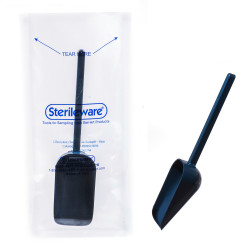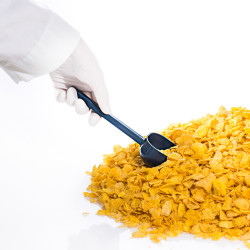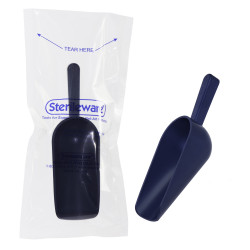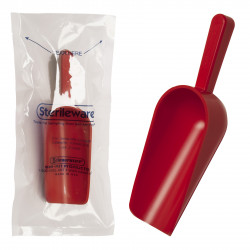
Case: In October 2022, the U. S. Food and Drug Administration (FDA) issued a recall notice saying that a U. S. food company was voluntarily recalling a chocolate sandwich cookies because it may have white plastic sheets.
Food recalls caused by plastic residues are common, so how to avoid them from the source? In addition to ensuring the safety of raw materials, it should also be gradually standardized from the sampling process to ensure food safety!
In fact, the production line may also have such a situation: the sample test results are abnormal, we checked all aspects of the test process have no deviation, the result is that the sample has been contaminated when sampling.
Such a situation is not uncommon in fact, how to eliminate it?
Also have to start from the standard sampling operation, to do sterile sampling, to avoid cross-contamination. The standardization of aseptic sampling is the premise to ensure the accuracy of sample detection, so we should standardize the operation when sampling to ensure that pollution is eliminated from the source.
1. Standardize the sampling process
2. Conduct professional training on sampling methods and relevant standards and specifications
3. Improve the management procedures of sampling equipment
4. Pay attention to method verification
So what kind of sampling tool should the laboratory choose?
The laboratory shall select appropriate equipment for sampling, packaging, extraction, etc. to avoid affecting the test results. Meanwhile, the container used for sampling shall ensure that no sample contamination is caused.
In 7.3.1 of the field of the Testing, it says that‘for samples without complete packaging or need to be opened, sterile sampling is required, monitor and record factors to be controlled including the preparation of sampling equipment, sampling process, sampling method and related environmental conditions such as sampling time and environmental conditions of sampling sites.’
Figure: Application of the Accreditation Guidelines for Testing and Calibration Laboratory in the Field of Microbiological Testing was formulated by China National Accreditation Committee for Conformity Assessment (CNAS)
To this end, SmartLab Hub introduces you to a safe laboratory sampling tool protocol:
SP Bel-Art is the first company to produce Sterileware (disinfectant), and they have been working in this field for more than 20 years! The Bel-Art Sterileware family of products are versatile to avoid cross contamination without expensive cleaning verification. The products are made of FDA grade materials and can be safely used in the food, pharmaceutical and cosmetics industries.
SP Bel-Art provides various types of sampling tools, including sterile, metal-detectable sampling spoons. Polystyrene plastic soaked with stainless steel powder from top to bottom allows detection of spoons and spoon fragments as small as 1.6mm³ with standard metal detection and X-ray equipment. To a great extent to avoid the sampling tools were left in the sampling bucket can not find the situation!
Product Superiority:
❀Reduce the risk of human error and sample contamination;
❀Made of materials conforming to FDA and EU standards;
❀Gamma irradiation is sterile (SAL 10^ (-6));
❀Separate packaging; batch marking, for accurate tracking; attached sterilization treatment certificate;
❀Some products are attached with stainless steel coating, which can be detected by standard metal detection and X-ray to avoid mixing into the product.
In addition to the stainless steel coated sampling spoon, white uncoated sampling spoon, there are eye-catching color sampling spoon! Bright red reduces the possibility of a spoon accidentally remaining in the sample.
Click here to learn more.





2 Comment(s)
1
1
1
1
1
Leave a Comment